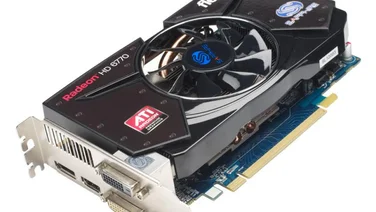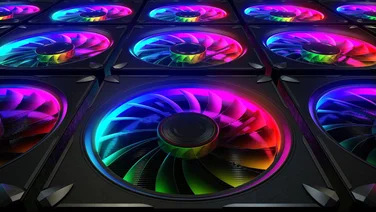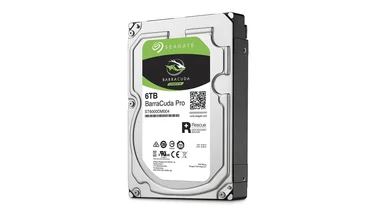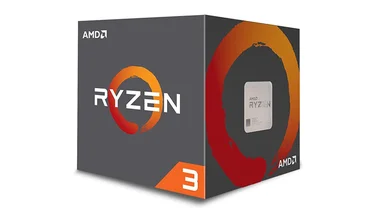To help us provide you with free impartial advice, we may earn a commission if you buy through links on our site. Learn more





All the graphics cards we’ve seen from Nvidia this year have been very much aimed at the high end of the enthusiast market. The absurd £880 dual-GPU Nvidia GeForce GTX 690 sits at the very top, followed by the Nvidia GeForce GTX 680 for a mere £380 (the GTX 680 has dropped in price by around £50 since we reviewed it in March).

Even the third card in the range comes in at a hefty £300. The GeForce GTX 670 is based on the same 28nm Kepler architecture as the GTX 680, with a slightly cut-down specification. There’s still 2GB of 1.5GHz GDDR5 memory, but the GPU now has 1,344 instead of 1,536 CUDA cores. The core speed is also slower, at 915MHz compared to 1.01GHz. Like all Kepler cards, the GPU can dynamically overclock when more power is required, but the GTX 670’s maximum rated boost is 980MHz rather than the GTX 680’s 1,058MHz. The card is 241mm long and Nvidia recommends a fairly modest 500W power supply with two six-pin PCI Express connectors, so you shouldn’t need a huge power supply upgrade.
The reduced power made some difference in our benchmarks. In Dirt 3 at 1,920×1,080 with 4x anti-aliasing and Ultra detail we saw 98.5fps from the GTX 670, down from the GTX 680’s 114fps. In Crysis 2 at 1,920×1,080 and Ultra detail, the GTX 670 managed 41.9fps rather than 49.6fps.
A card this powerful is also crying out to be used on more than one monitor, so we plugged in another couple of 1080p displays. The GTX 670 has two DVI as well as HDMI and DisplayPort outputs, so you have plenty of flexibility in your choice of monitors – you can use any combination of these ports for Nvidia’s triple-monitor Surround mode.

The card was still powerful enough to run Dirt 3 on three monitors, even with triple-monitor Surround mode enabled for a resolution of 5,760×1,080 with 4x anti-aliasing and Ultra detail. At this resolution we saw 41.9fps, and the frame rate never dipped below a still-smooth 34.2fps. Like every card we’ve ever seen bar the ridiculous GTX 690, the GTX 670 struggled when running Crysis 2 on three monitors – we only saw 16.4fps at 5,760×1,080 in this most demanding of games.
The GTX 670’s performance in our game tests puts it in a sweet spot that few current graphics cards can touch. The rung above contains the AMD Radeon HD 7970 GHz Edition for £370 and the Nvidia GeForce GTX 680 for £380, both of which are around 15% faster than the GTX 670. Below it you have the AMD Radeon HD 7950 for £288, which is around 25% slower. Seen in this light, it’s a good value enthusiast card.
There’s one more thing to consider, though. We also had a Zotac GeForce GTX 670 AMP! Edition in to test (£360 from www.scan.co.uk). This is an overclocked version of the GeForce GTX 670 with a huge twin-fan heatsink. The card is a similar length to the standard GTX 670, but it’s much thicker; the backplate only takes up two slots, but the width of the heatsink means the card may block a couple of expansion slots on your motherboard.

This heatsink is necessary, though, as the card is heavily overclocked. Zotac has raised the card’s core speed from 915MHz to 1,098MHz – a 183MHz overclock. The card’s boost speed is also much higher than the standard GTX 670’s 980MHz, at 1,176MHz max GPU boost.
The overclocking made a huge difference in our benchmarks. Our 1,920×1080 Ultra detail Dirt 3 test jumped from 98.5fps to 115fps, which is 1fps faster than the Nvidia GeForce GTX 680. Crysis 2 at 1,920×1,080 and Ultra detail increased from 39.5fps to 45.9fps, which is just 1fps slower than the GTX 680. With three monitors in Surround mode, we saw 48.6fps, and the frame rate never dipped below a very smooth 40.6fps – again, this was just 1fps slower than the GTX 680’s score.

The AMP! Edition’s overclock means that you get a card as quick as a GeForce GTX 680 for around £20 less, which is an impressive feat. However, bear in mind that Zotac’s card is already very heavily overclocked, so there’s very little room to push it any further using a utility such as MSI’s Afterburner – we’ve read plenty of stories of enthusiasts pushing the clock speed of the GTX 680 to 1300MHz and beyond, so the more expensive card still has a lot to give.

The GeForce GTX 670 is an impressive graphics card which fills a gap in the market at the £300 mark, and is quicker than its rivals from AMD at around the same price. Zotac’s overclocked GTX 670 AMP! Edition is also an impressive bit of kit, as its overclock gives it similar performance to that of the Nvidia GeForce GTX 680. It also brings the price periously close to the more expensive card, though, so we’d recommend finding the extra cash for the Nvdia GeForce GTX 680 and and leaving yourself some room for overclocking.






